K’alemi Dene School in Ndilo, Northwest Territories was successfully awarded funding for the project: “Climate Change and our Lands in Film: A Yellowknives Dene First Nation youth climate change adaptation plan” through the Health Canada’s First Nations and Inuit Health Branch Climate Change Adaptation Program in 2015. The project ran from May 2015–June 2016; ICHR was a partner and assisted with research logistics and implementation.
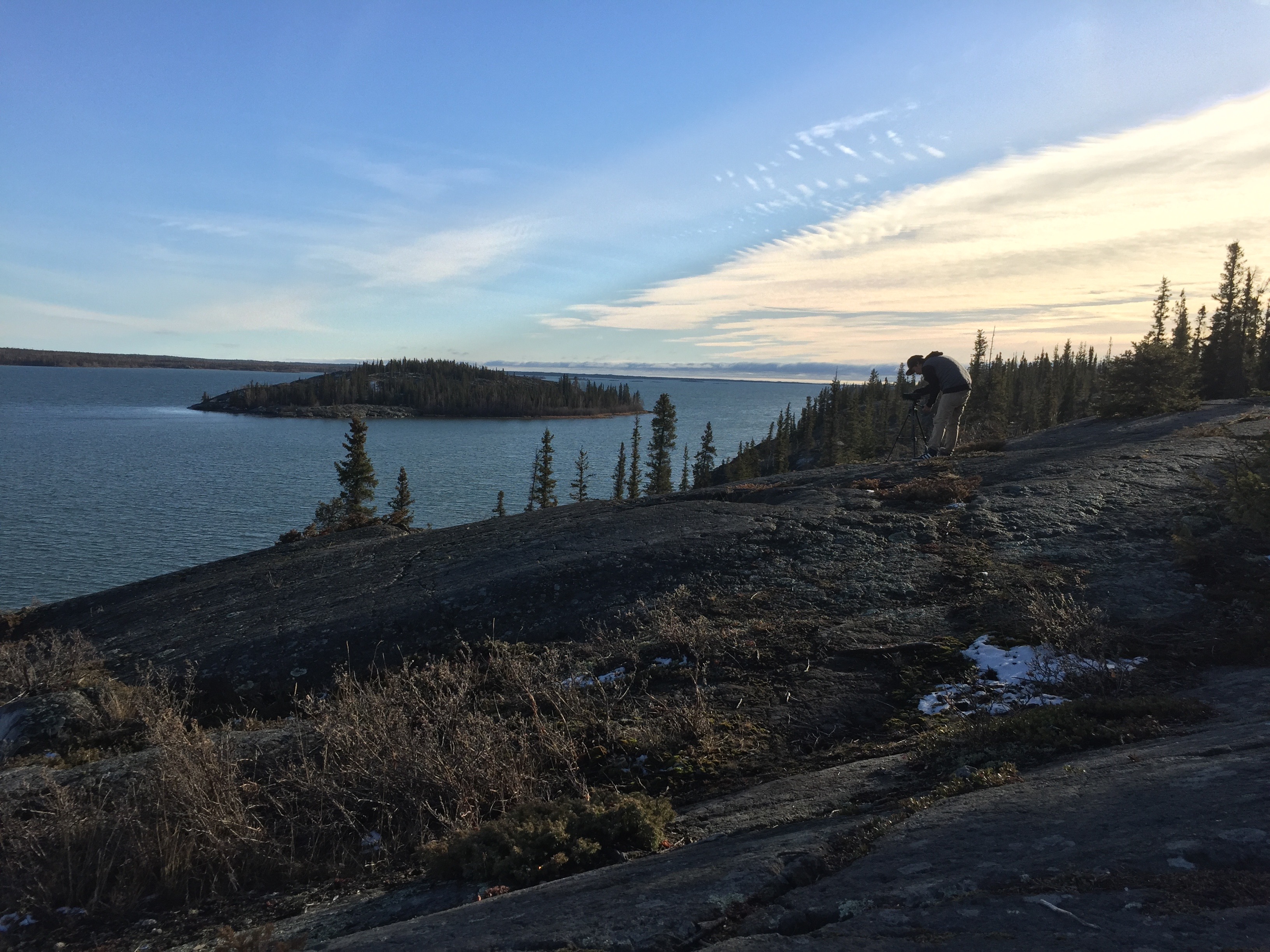
CCLIF student, Aaron Flunkie-Mantla, filmking some b-roll.
The objective of the project was to document how climate change is impacting the health of community members in Ndilo and Yellowknife, for students to create an adaptation strategy, and document this strategy by using the participatory action video research methodology. The project will be used to meet the following goals:
- Inspire youth to explore and identify their knowledge of their changing landscapes
- Create a student-led adaptation strategy plan while simultaneously receiving three credits in communications and technology
- Exchange the research findings to create networks with neighbouring northern Indigenous communities
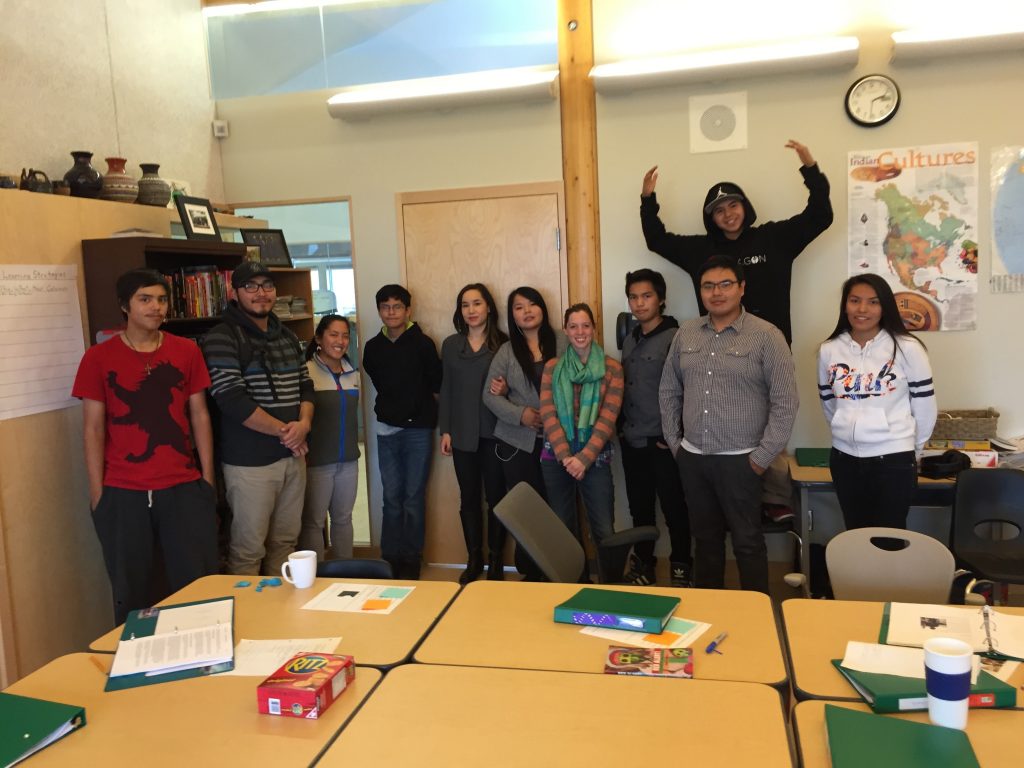
CCLIF Students with guest presenter Mason Mantla, Tlicho filmmaker and social program coordinator with the Tlicho Government.
Project Summary
CCLIF was a grassroots response to climate change (notably warmer winters and intensified forest fire seasons) in Chief Drygeese Territory, Northwest Territories, Canada. The team consisted of Kalemi Dene School high school students, ICHR support staff, teachers, and a documentary film instructor.
From September 2015 to December 2016, students were rigorously trained in action video research, documentary film production, and climate change literacy. For the last portion of the school year, students conducted interviews with local TK experts, bio-fuel specialists, an ecologist, and an emergency room physician. The information that derived from the interviews was used to form their own climate change adaptation and mitigation plan. Students documented their learning outcomes, the creative process, and 8 step adaptation and mitigation plan as seen in the 20 minute film. The project is of significant importance to the community for four reasons. First, it showcased local youth leadership and talent. Second, it celebrated the incorporation of Dene cultural values and science that can influence people to take action in decreasing their greenhouse gas footprint. Third, it created capacity for indigenous youth to take charge of their own action video research. Fourth, it was shared with other First Nations schools in the Northwest Territories and Canada as a means to contribute to the growing climate change adaptation and mitigation network.
On December 6, 2016 the students held a public film screening of the documentary. All project partners including YKDFN’s Chief Sangris, Arctic Energy Alliance’s Steve Outlet and Vince Hiratsuka, Ecology North’s Rose Jackson and Lyle Fabian, ICHR’s Susan Chatwood, all Kalemi Dene School teachers and KDS Grades 5-12 students had the opportunity to watch the film at Kalemi Dene School. The students led a firey Q&A session following the film. We are in the process of publishing the film online to reach a wider audience. Special thanks to Justin Kavanaugh, High School Teacher, for helping us coordinate this event.
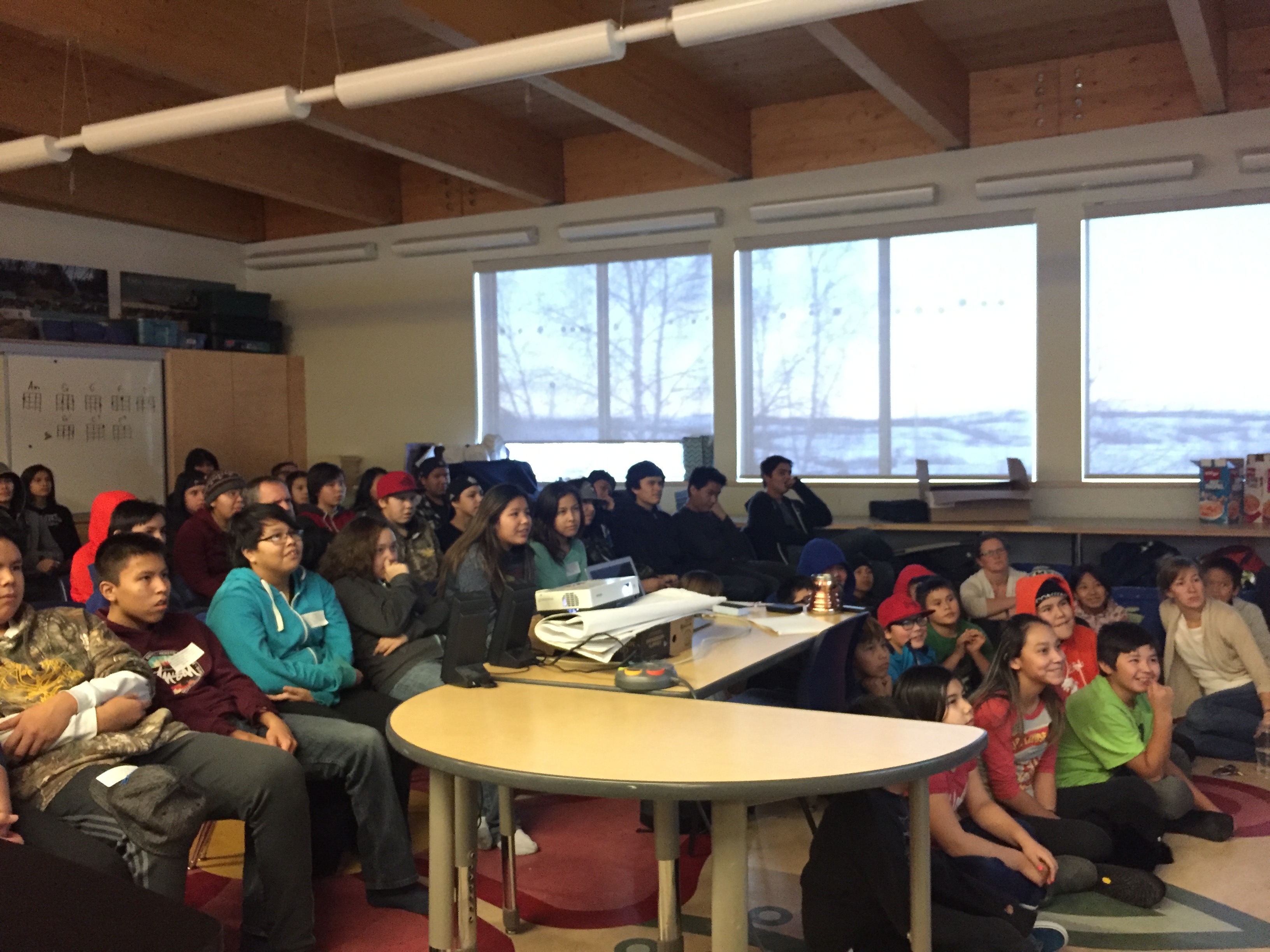 KDS Students watching Climate Change & Our Lands in Film at it’s first public screening.
KDS Students watching Climate Change & Our Lands in Film at it’s first public screening.
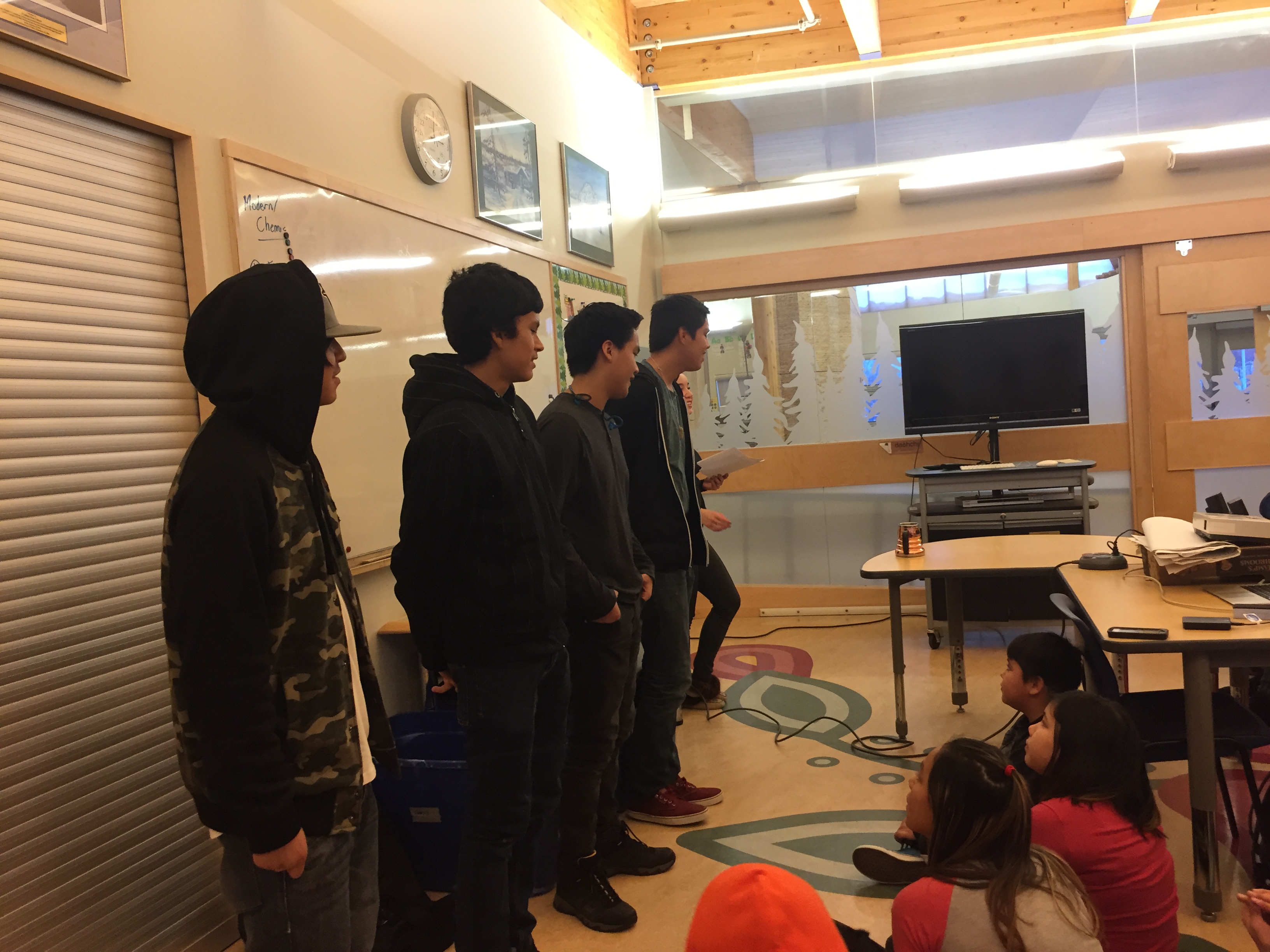
CCLIF Students leading a Q&A session with the audience.
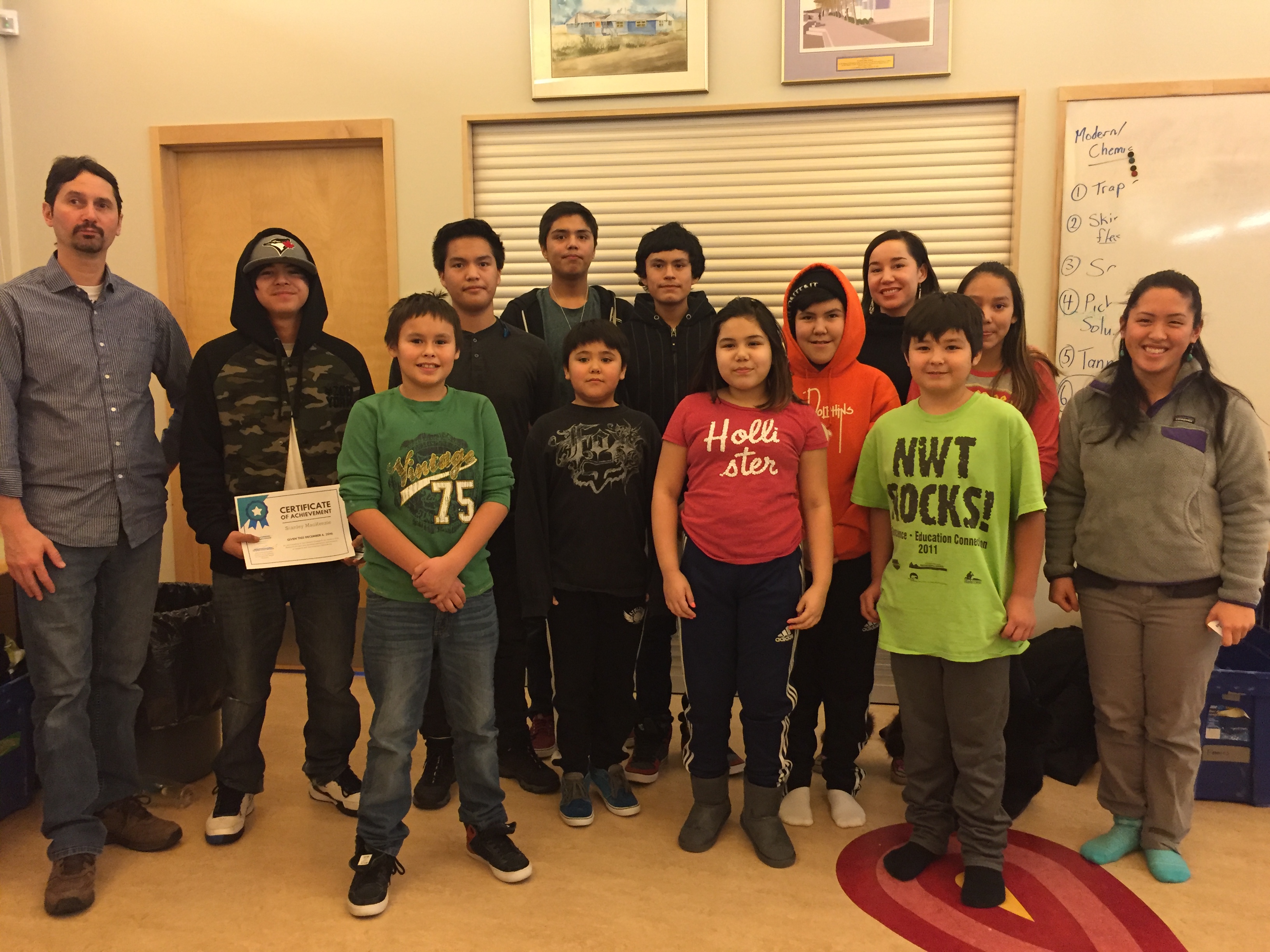
CCLIF Students with their younger fans.
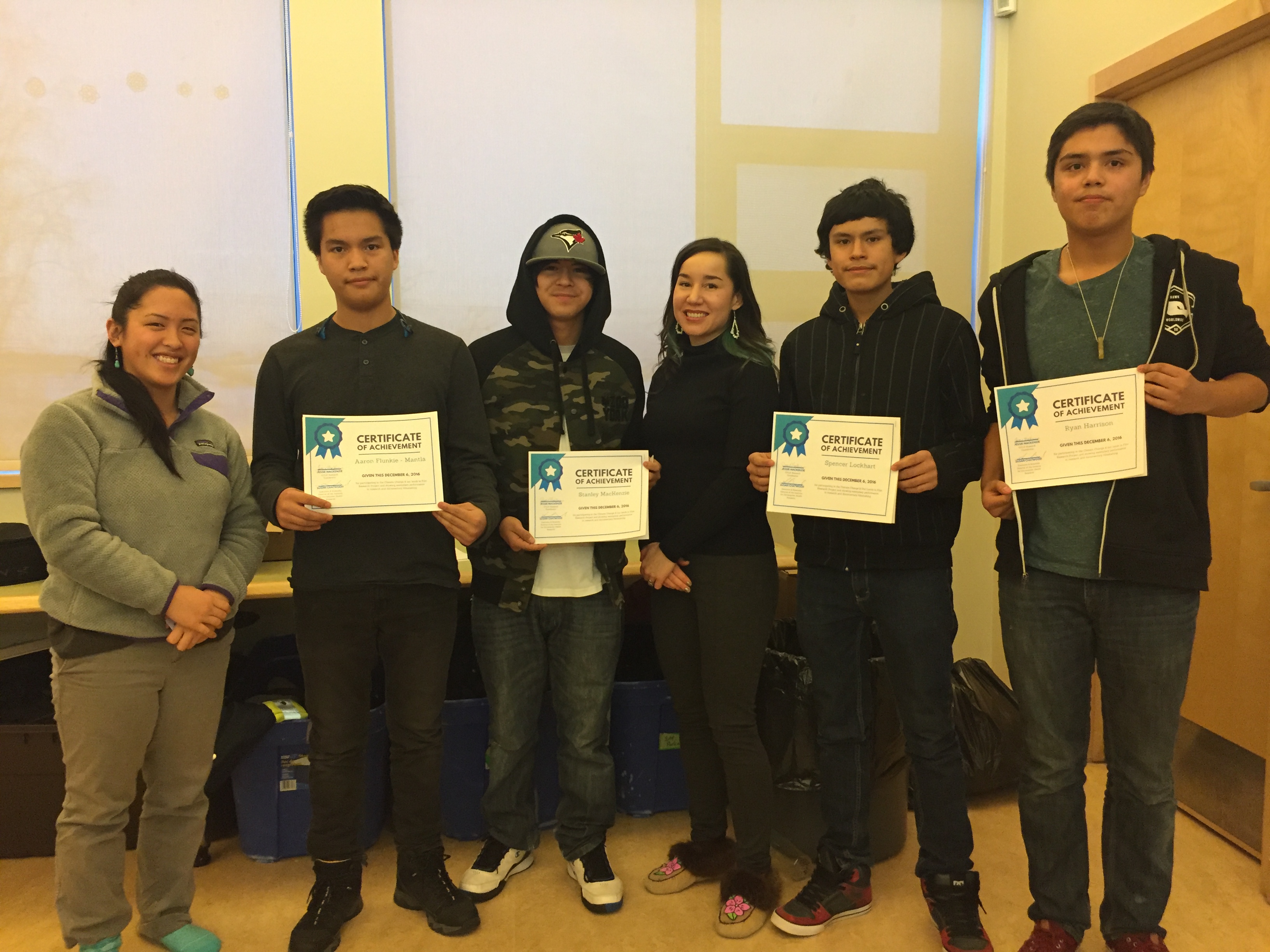
CCLIF students with their certificates of achievement along with CCLIF Research Coordinator, Jessie MacKenzie, and ICHR Research Assistant, Stephanie Young
Our Climate Change Adaptation Plan
- Traditional Living: We can reduce our green house gas emissions by participating in traditional activities.
- Alternative Transportation Options: We can carpool, take the bus, walk, or use bio-fuel to power our vehicles.
- Just Go Outside: Be physically active! Play sports! The more time we spend outside the less fossil fuels will be used.
- Use Wood Pellet Burners: They are a cleaner option than propane.
- Use Solar Panels: Solar energy is a renewable resource and doesn’t emit green house gasses.
- Be Prepared: Always have extra supplies in case you fall through the ice.
- Help Each Other: Help Elders and your family if they become ill from forest fire smoke.
- Take Care of the Land: When we take care of the land, the land takes care of us.
CCLIF team would like to thank the interviewees who shared with the students and contributed to the Climate Change Adpatation and Mitigation Plan:
Chief Edward Sangris, YKDFN
Fred Sangris, YKDFN
Mason Mantla, Community Action Research Team, Tlicho Government
Courtney Howard, MD
Craig Scott, Ecology North
Steve Outlet & Vince Halushka, Arctic Energy Alliance
Aileen Drybones, Kalemi Dene School
Erin Freeland-Ballantyne, Dechinta Centre for Research and Learning
Tom Girrior, Yellowknife Search and Rescue
Special thanks to KDS students Shavannah Kochon, Derek King, Stanley Mackenzie, Ryan Harrison, Spencer Lockhart, and Aaron Flunkie for their involvement in the course and project.
We would also like to thank the dedicated staff at K’alemi Dene School: Eileen Erasmus, David Ryan, Aileen Drybones, Aaron Plotner, Kevin Lafromboise, Ty Hamilton, and Justin Kavanaugh. As well as, Susan Chatwood at the Institute for Circumpolar Health Research and Jeremy Emerson, Davis Heslep, and Terry Woolf at Western Arctic Moving Pictures.
Mahsi cho to the First Nations Inuit and Health Branch of Health Canada and the Canadian Institute for Health Research for supporting community-based research and inidigenous youth.
For more information, please contact: Jessie MacKenzie, CCLIF Research Coordinator